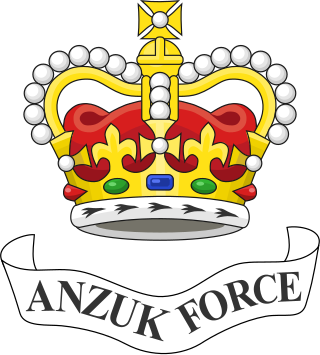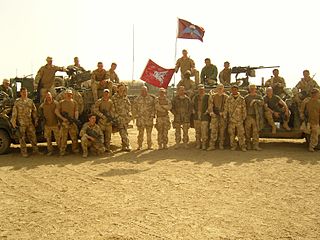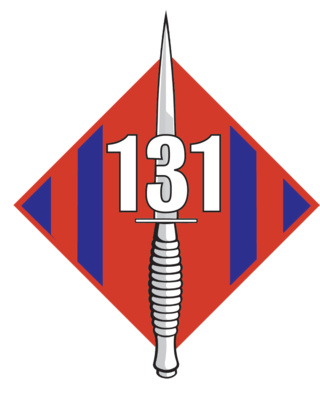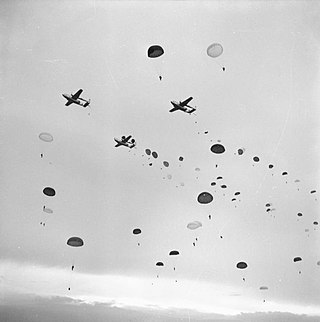Organisation and history
1947
When the Territorial Army (TA) was reformed in the UK, the order of battle included the 16th Airborne Division (TA), which had its divisional headquarters in Chelsea, South-West London. The division included a Royal Army Service Corps (RASC) column, which came into existence on 1 January, though recruiting did not open until 1 May.
The headquarters of 16th Airborne Divisional Column, RASC (TA) was initially at The Duke of York's headquarters in Chelsea; but, in 1949, it was relocated to the TA Centre at Hayes Bridge, Southall, Middlesex. The column comprised three companies:
- 1560th Company (Airborne Divisional Composite), RASC (TA), at Park Lane, Tottenham, N17.
- 1561st Company (Airborne Divisional Composite), RASC (TA), at Vine Street, Uxbridge.
- 1562nd Company (Airborne Divisional Composite), RASC (TA), at Hayes Bridge, Southall.
The four-figure numbers allocated to the companies denoted that they were newly raised units of the TA, having not existed prior to the Second World War.
The commanding officer and adjutant were regular officers: the regimental sergeant major, permanent staff instructors (PSI) and a small cadre of drivers were regular soldiers. All other posts were filled by TA volunteer soldiers. The organisation of these companies was similar to the regular army RASC company, except that they were on war establishment and had a smaller composite platoon. The Parachute course for the TA was compressed into two weeks to meet their limited training availability, but included the eight qualifying jumps.
1951
A new numbering system for RASC (TA) units was adopted, whereby all Companies were given a three-figure number. As a result, the "1" prefix, was dropped and the Companies became known as 560th, 561st and 562nd Companies (Parachute Brigade Transport), RASC (Middlesex) (TA).
1952
Each company was allocated its own integral Light Aid Detachments (LAD) of the Royal Electrical and Mechanical Engineers (REME).
1955
The LADs were upgraded to company workshops. 560th Coy relocated to the TA Centre in Tottenham High Road, N17 and 561st Company relocated to the TA Centre at Cowley. The War Office announced that 16th Abn Div (TA) would disband the following year and be replaced by a single parachute brigade. The RASC unit required for the brigade would be reduced to a single company.
1956
In October, 44th Independent Parachute Brigade Group (TA) was created, with headquarters at The Duke of York's HQ, Chelsea, London SW3. The 16th Airborne Divisional Column was temporarily placed under command of this brigade as it underwent the process of disbandment and reorganisation into one company.
1957
In February, 16 Airborne Divisional Column, RASC (TA) was disbanded and 562nd Company (Independent Parachute Brigade Transport), RASC (Middlesex) (TA) became the sole RASC unit in the brigade. It remained at Hayes Bridge along with its REME Workshops.
1965
There was a general re-organisation of the British Army Corps structure, which led to the RASC transport and supply functions being separated and the corps disbanded. The new military transport organisation formed from this restructuring was the Royal Corps of Transport (RCT). The supply function was transferred to an enlarged Royal Army Ordnance Corps (RAOC). As a result of these changes, and the formation of the new corps, 562nd Coy was redesignated as 562nd (Middlesex) Independent Parachute Squadron, RCT (TA).
1967
The year saw a transformation of the Reserve Forces (Army), and the Territorial Army became the Territorial and Army Volunteer Reserve (TAVR). 562 Independent Parachute Squadron, RCT (Volunteers) was formed on 1 April 1967 as a successor unit to the old 562 Para Sqn RCT (TA). The Squadron HQ and HQ Troop remained at Hayes Bridge, Southall, along with "C" Troop, whilst "A" Troop was formed at the Cedars TA Centre, Portway, West Ham, London E15 and "B" Troop at Lordship Lane, Dulwich, London SE22. The squadron continued to support 44 Parachute Brigade (Volunteers) as its integral RCT unit.
A new unit, 395 Air Despatch Troop, RCT (Volunteers), had been formed in 1967 at Coulsdon, Surrey. This was the first Air Despatch unit to be raised outside of the Regular Army and, in 1971, the troop was relocated to Bristol and then, subsequently, to Chippenham in Wiltshire, so as to be near to its Regular Army counterpart, 47 Air Despatch Squadron, RCT. Some personnel from the troop at Coulsdon transferred to the squadron's "B" Troop at Dulwich.
On the demise of the RASC, there had still been a requirement for a combat supplies function to provide ammunition, fuel and rations to 44 Parachute Brigade (V). This function was assigned to a Combat Supplies Platoon formed within 562 Para Sqn. This platoon was based at Southall and manned by RAOC Territorial Army soldiers trained in that particular role (see potted history of this sub unit below).
Final Order of Battle – 562 Parachute Squadron Royal Corps of Transport (Volunteers)
- HQ Troop, C Troop, Combat Supplies Platoon, Workshops all based at the Drill Hall, Southall, Middlesex.
- A Troop was based in The Cedars Drill Hall, West Ham.
- B Troop was based at the Drill Hall, Lordship Lane, Dulwich.
The squadron was commanded by a major and was established along traditional lines with a captain as second-in-command (2I/C). Other captains held appointments, such as the Transport Control Officer (TCO). The transport troops were usually commanded by a subaltern with a staff sergeant (SSGT) as 2I/C. The REME workshop was commanded by either a captain or subaltern with a warrant officer class two, who held the appointment of artificer quartermaster sergeant (AQMS), as 2I/C.
HQ troop was, of course, the unit's nerve centre: it was where the squadron sergeant major and chief clerk amongst other appointments were to be found.
As an independent Territorial Army squadron, there were also a number of regular army soldiers posted to the establishment of the squadron. Their primary role was to advise the command elements in training matters and ensure that the unit retained its fully trained operational status. These soldiers were known as permanent staff instructors (PSI's).
- Officer commanding major could either be a regular or TA soldier.
- WO2 PSI (training Responsibility)
- SSGT (SQMS) squadron quartermaster sergeant (Maintenance of weapons and stores)
- SSGT chief clerk (admin and documentation)
- WO2/SSGT REME (training responsibility for the workshop)
The unit's role was to provide transport support to the Territorial Army's 44 Parachute Brigade (V). When this brigade was disbanded in March 1978, 562 Parachute Squadron RCT (Volunteers) was redesignated 562 Squadron RCT (Volunteers) and taken under the command of 151 (Greater London) Transport Regiment RCT (Volunteers). With the loss of the parachuting role and the coveted "Red Beret", significant numbers of the unit transferred to other TA units that still retained a parachute role. The Parachute Regiment's 10th Battalion being the biggest beneficiary as, like the squadron, it too was based in London.
History of 562 Para Combat Supplies Platoon
This unit was formed after the reorganization from the RASC to the RCT. It is descended from the Composite companies in 16 Airborne Division and 562 Parachute Coy RASC TA. These units supplied ammunition, fuel, composite rations, fresh meat, bread, and vegetables to the front line. Thus, anyone who was a butcher, baker or greengrocer and could be Para trained would be selected to serve. The Airborne was no different except for the fact that every thing they needed had to be delivered by air or sourced locally from the indigenous population when on the ground as supplies by road could not be guaranteed.
The re-badging parade was held at Plaisterdown Camp in July 1967. The unit was badged as RAOC in line with the M.O.D. policy at that time, that all Army transport would be administered by the newly formed RCT. 562 Para Parachute Combat Supplies Platoon RAOC (V) was born and would now be responsible for supplying all combat supplies (ammunition, fuel, and rations) to 44 Parachute Brigade's fighting echelons. Personnel with the relevant civilian trade experience were all Para trained and, later, they were to have acquired rigging skills on Medium and Heavy Stressed Platforms at J.A.T.E. Watchfield. Their main function was to set Distribution Points (DPs) for Combat Supplies to the rear of the Airborne fighting echelons. The stores would then be collected by the "Q" reps of each unit on the ground, which included setting up re-fuelling facilities for heliborne exercises. This unit also had another function: when the brigade was in a static location, it would be required to provide a source of high quality fresh meat, vegetables, and other foodstuffs from local suppliers so as to feed the paratroopers on the ground.
This would mean that they would have to identify fresh vegetable suppliers, local baking and slaughtering facilities and, if necessary, bring them up to the required military standard using existing civilian labour. There was a case where this happened when 44 Parachute Brigade went to Cyprus on "Ex New Venture". 562 Parachute Combat Supplies RAOC was tasked to visit the local meat supplier to the UNCYP Forces based on the island. Sgt Dalton, Corporals Preston and Laing (who are all qualified Master Butchers in civilian life) were on hand to advise on the latest slaughtering techniques and meat preparation, which included sausage making. This was very much appreciated by UNICYP, especially the British contingent.
Key Personalities
| Date | RAOC | TAVR |
|---|
| 1967–1969 | S/Sgt P McCann | Capt Tappenden, S/Sgt P King, Sgt J Allen |
| 1969–1972 | S/Sgt G Hawthorn | Capt K.J. Rawlings, S/Sgt J Allen, Sgt E Dalton |
| 1972–1978 | S/Sgt A Beverly | Capt.K.J. Rawlings, S/Sgt E Dalton, Sgt C Preston |
History of 562 Parachute Squadron Workshop REME (V)
Until 1965, when the RASC became the RCT, the REME within 562 Parachute Company comprised a light aid detachment, located in the workshop area of the drill hall at Southall Middlesex. This unit only had responsibility for first line recovery/repairs and was manned accordingly.
In 1965, the establishment and scale of equipment for 562 Workshop element was increased with responsibility given for second line repairs. This gave rise to the change of title from light aid detachment to workshop, still based at Southall.
Because 16 Para Brigade retained its full workshop within 1st Parachute Logistic Regiment, 562 became the only parachute squadron workshop in the British Army with a unique establishment and role.
The only other REME formation in 44 Brigade was a parachute platoon of 133 Field Workshop [REME](V) based in Coventry. Other REME personnel in the brigade comprised attached personnel.
The workshop was established with a captain commanding, WO2 AQMS as 2I/C and six other senior ranks, including a sergeant storeman. The permanent staff instructor was a regular Para-trained WO2 artificer until 1975 when a Para-trained SSGT artisan was posted in.
During the 1970s, the workshop regularly took part in Exercise Southern Craftsman (the annual REME fitness for role/field engineering competition) and won on three occasions. Workshop personnel also took part in a number of competitions, representing 562 Squadron including Nijmegen Marches, Courage Trophy, AESOR and Chichester March.
Major Units of 44 Para Brigade were:
- 4th (Volunteer) Battalion, The Parachute Regiment – HQ Pudsey with Companies in Liverpool, Oldham, Gateshead and Norton
- 10th (Volunteer) Battalion, The Parachute Regiment – HQ White City, London with Companies in White City, Finchley, Croydon and Aldershot
- 15th (Scottish Volunteer) Battalion, The Parachute Regiment – HQ Glasgow with Companies in Glasgow, Aberdeen and Edinburgh
Other Minor Units of 44 Para Brigade were:
- 289 Parachute Battery, Royal Horse Artillery (V) – East Ham (this unit left the brigade in 1977 when it converted to 289 Commando Battery (V), Royal Artillery)
- 131 Independent Parachute Squadron, Royal Engineers (V) – HQ in London, with Troops in Birmingham, Hull and Grangemouth (In 1978, this became 131 Independent Commando Squadron (V) Royal Engineers)
- 44 Parachute Brigade Signal Troop, Royal Signals (V) – Chelsea
- 16th (Volunteer) Independent Company, The Parachute Regiment – Lincoln
- 144 Parachute Field Ambulance, Royal Army Medical Corps (V) – HQ in London, with detachments in Nottingham, Glasgow and Cardiff
- 44 Parachute Ordnance Field Park, Royal Army Ordnance Corps (V) – Heston
- 1 Parachute Provost Platoon, Royal Military Police (V) – Tulse Hill

The Corps of Royal Electrical and Mechanical Engineers is the maintenance arm of the British Army that maintains the equipment that the Army uses. The corps is described as the "British Army's professional engineers".
This is a list of British ground forces in the Falklands War. For a list of ground forces from Argentina, see Argentine ground forces in the Falklands War

The Royal Corps of Transport (RCT) was a British Army Corps established to manage all matters in relation to the transport of men and material for the Army and the wider defence forces. It was formed in 1965 and disbanded in 1993; its units and trades were amalgamated into the Royal Logistic Corps. The Depot and Training Regiment RCT was at the former Buller Barracks in Aldershot garrison.
This is the complete order of battle of Allied and German forces involved during Operation Market Garden.

ANZUK was a tripartite force formed by Australia, New Zealand, and the United Kingdom to defend the Asian Pacific region after the United Kingdom withdrew forces from the east of Suez in the early 1970s. The ANZUK force was formed in Singapore on 1 November 1971 under Rear Admiral David Wells and disbanded on 31 January 1974.

The 5th Infantry Brigade was a regular infantry brigade of the British Army that was in existence since before the First World War, except for a short break in the late 1970s. It was an Airborne Brigade from the early 1980s until amalgamating with 24th Airmobile Brigade, in 1999, to form 16 Air Assault Brigade.

44th Parachute Brigade was a British Army Territorial Army parachute brigade, active from c.1950 to 1978.
151 Regiment RLC is a regiment of the British Army's Royal Logistic Corps. It is currently under Army Reserve control.
This is the Operation Herrick ground order of battle, which lists any British ground forces that have taken part in the duration of Operation Herrick between 2002 and 2014.

The Home Service Force (HSF) was a Home Guard type force established in the United Kingdom in 1982. Each HSF unit was placed with either a Regular Army or Territorial Army regiment or battalion for administrative purposes and given that formation's title, cap badge and recruited from volunteers aged 18–60 with previous British forces experience. It was introduced to guard key points and installations likely to be the target of enemy special forces and saboteurs, so releasing other units for mobile defence roles. It was stood down in 1992 due to budget cuts.

15 Air Assault Support Squadron is a British Army logistic squadron, currently under 13 Air Assault Support Regiment RLC.

131 Commando Squadron Royal Engineers is an Army Reserve unit and part of 24 Commando Regiment Royal Engineers. It provides engineering support to UK Commando Force. and is the largest Army Reserve Commando unit. The squadron has deployed worldwide to provide combat engineer support to the UKCF, often deploying in small sub-units. 131 was first raised in 1947 as an airborne engineer regiment, and reached a strength of over 1,000 trained parachute engineers by the early 1960s. Between 1 April 1978 and 1 October 2015, the unit was an independent Commando squadron under operational command of HQ 3 Cdo Bde RM. On 2 October 2015, it formally became the third squadron of 24 Commando Engineer Regiment.

The 16th Airborne Division was an airborne infantry division of the British Territorial Army. It was first commanded by Major-General Roy Urquhart, and had its divisional headquarters in London.

With the adoption of the Singapore strategy in the 1920s as a key cornerstone of Imperial Defence, Singapore and Malaya became the major British bases in the East, not only to defend British possessions in Asia, but also the dominions of Australia and New Zealand, who also contributed a large portion of the construction costs.
The 80th Anti-Aircraft Brigade was an air defence formation of the British Army during the Second World War. It landed on D-Day and saw action throughout the campaign in North West Europe, providing early warning of attacks by V-1 flying bombs against Antwerp during the winter of 1944–45.
The following is a hierarchical outline for the structure of the British Army in 1989. The most authoritative source for this type of information available is Ministry of Defence, Master Order of Battle, and United Kingdom Land Forces, HQ UKLF, UKLF ORBAT Review Action Plan, HQ UKLF, 1990.

The Antrim Fortress Royal Engineers was a coast defence unit of the UK's Territorial Army formed in Northern Ireland in the late 1930s. During World War II it was converted to a parachute role and dropped into Normandy on D Day and across the Rhine during Operation Varsity. Its successors continue in the Army Reserve today.
The 2nd Division Transport Regiment was a military support unit of the British Army, forming part of the Royal Corps of Transport. Initially formed in 1953, the regiment would serve the 2nd Infantry Division until its first disbandment in 1984 following a reorganisation of the British Army of the Rhine. Reformed one year later, it would finally be disbanded in 1993 following the End of the Cold War.

299 Parachute Squadron, Royal Engineers is a specialist field engineer squadron of the British Army's Corps of Royal Engineers and the only reserve parachute unit of the corps. Formed in 1947 as an airborne field squadron, 299 Para Sqn would see many reorganisations and new roles, until 2006 when it took on the parachute role it maintains today. As of 2021, it is the only reserve parachute-trained squadron of the Royal Engineers.












